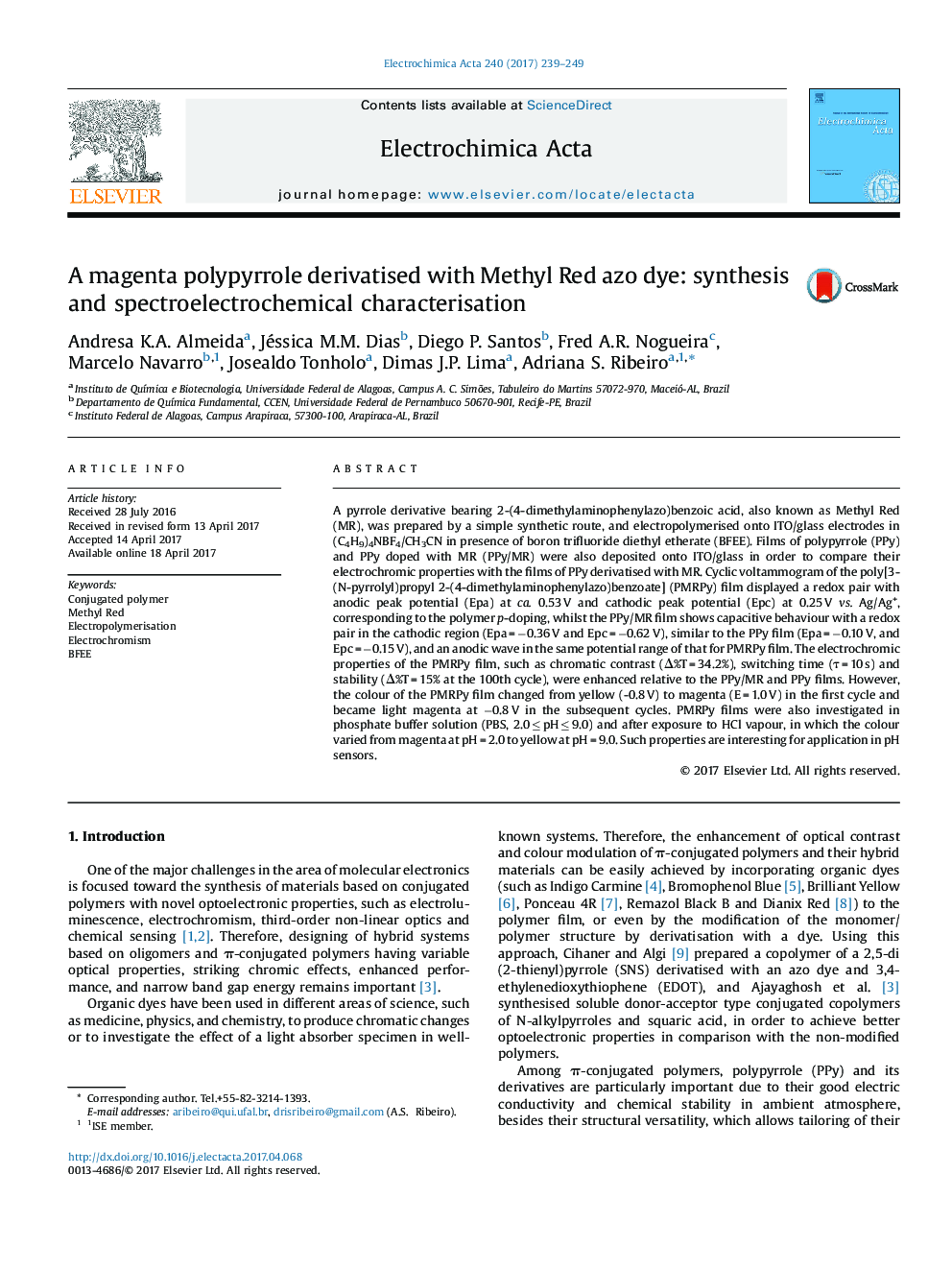| Article ID | Journal | Published Year | Pages | File Type |
|---|---|---|---|---|
| 6471287 | Electrochimica Acta | 2017 | 11 Pages |
â¢A pyrrole (Py) derivative functionalised with methyl red (MRPy) was synthesised.â¢MRPy was polymerised electrochemically in LiClO4/CH3CN with BFEE.â¢Electrochromic properties of PMRPy and PPy doped with methyl red (PPy/MR) were compared.â¢Colour of the PMRPy changes from magenta to yellow depending on the pH.â¢PMRPy films might be applicable in optoelectronic devices or in pH sensors.
A pyrrole derivative bearing 2-(4-dimethylaminophenylazo)benzoic acid, also known as Methyl Red (MR), was prepared by a simple synthetic route, and electropolymerised onto ITO/glass electrodes in (C4H9)4NBF4/CH3CN in presence of boron trifluoride diethyl etherate (BFEE). Films of polypyrrole (PPy) and PPy doped with MR (PPy/MR) were also deposited onto ITO/glass in order to compare their electrochromic properties with the films of PPy derivatised with MR. Cyclic voltammogram of the poly[3-(N-pyrrolyl)propyl 2-(4-dimethylaminophenylazo)benzoate] (PMRPy) film displayed a redox pair with anodic peak potential (Epa) at ca. 0.53 V and cathodic peak potential (Epc) at 0.25 V vs. Ag/Ag+, corresponding to the polymer p-doping, whilst the PPy/MR film shows capacitive behaviour with a redox pair in the cathodic region (Epa = â0.36 V and Epc = â0.62 V), similar to the PPy film (Epa = â0.10 V, and Epc = â0.15 V), and an anodic wave in the same potential range of that for PMRPy film. The electrochromic properties of the PMRPy film, such as chromatic contrast (Î%T = 34.2%), switching time (Ï = 10 s) and stability (Î%T = 15% at the 100th cycle), were enhanced relative to the PPy/MR and PPy films. However, the colour of the PMRPy film changed from yellow (-0.8 V) to magenta (E = 1.0 V) in the first cycle and became light magenta at â0.8 V in the subsequent cycles. PMRPy films were also investigated in phosphate buffer solution (PBS, 2.0 â¤Â pH â¤Â 9.0) and after exposure to HCl vapour, in which the colour varied from magenta at pH = 2.0 to yellow at pH = 9.0. Such properties are interesting for application in pH sensors.
Graphical abstractDownload high-res image (105KB)Download full-size image
